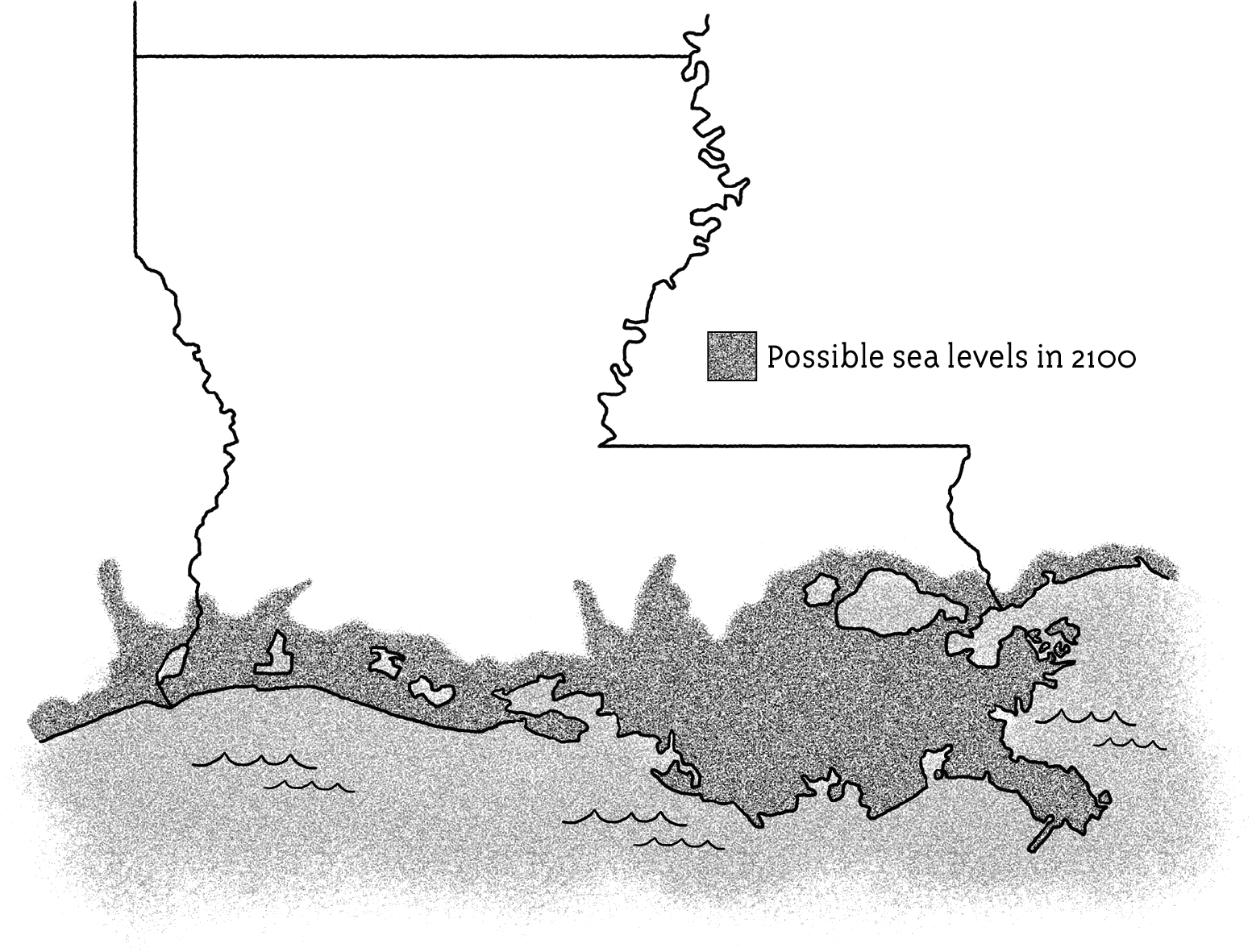CHAPTER 9
Climate Change
People in the gulf and other coastal regions are used to hurricanes. In spite of the risks, they continue to move to the coast or go there for vacation. Tourism, oil and natural gas, shipping ports, and fishing are all huge coastal industries. Should people living in coastal areas be worried about climate change? Yes.


In the spring of 2014, the National Climate Assessment was published. The report took four years to prepare and involved more than three hundred scientists. It showed that since 1895, the average air temperature has increased by 1.5°F. Most of that rise has been since 1980. According to the Environmental Protection Agency, temperatures are expected to rise by up to 10°F by the end of the twenty-first century.
The surface temperature of oceans is also getting warmer, causing sea levels to rise. That is because the warmer ocean water swells in a process called thermal expansion. The warmer water also melts ice in the polar regions and throughout the world’s glaciers. At the rate global warming is going, by the year 2100, sea levels could be one to six feet higher than they were in 2014!

Scientists know that there have always been sea-level changes due to natural causes. But current studies point to greenhouse gases as the main driving force behind warmer air, warmer ocean temperatures, and rising sea levels. Greenhouse gases are produced mostly by gas emissions from burning fossil fuels for electricity, heat, and transportation. Greenhouse gases trap heat, causing the earth to get warmer.
How does climate change make it riskier to live in places like New Orleans? Islands near a coast are called barrier islands. These islands are eroding away as the sea level rises. Barrier islands help to absorb the force of hurricanes. They can even slow down storm surges, kind of like speed bumps. Millions of dollars have been spent to try to rebuild barrier islands in the Gulf Coast region. But they are not as strong as the original islands, which formed over time from sand and added sediment from the Mississippi River.
Rising sea levels and warmer ocean temperatures mean more powerful storms. In fact, most scientists agree that global warming is already having an effect on the number and power of hurricanes. In the Atlantic and Pacific, storms increased in intensity by about 50 percent compared to storms before 1970. Warmer water and fewer barrier islands are allowing hurricanes to become larger, last longer, and cause more destruction.
The amount of precipitation (rainfall) has also gone up. The increase could be too much for the new levee system around New Orleans. The system was built to prevent the kind of flooding that occurred from Hurricane Katrina. But it appears that future storms and flooding could be even worse than what Katrina brought with it.
What can be done? Nature will always challenge us, but human-caused problems can be resolved if people cooperate. In 2014, US President Barack Obama proposed a plan to try to help cut down the greenhouse gases that fuel global warming. The plan would do things such as limit carbon pollution from power plants, promote the use of renewable energy, and work to cut energy waste in homes and businesses.

The US Environmental Protection Agency had already started to regulate greenhouse gases under the Clean Air Act in early 2011.
Was Hurricane Katrina a wake-up call? A lot of people hope so.
